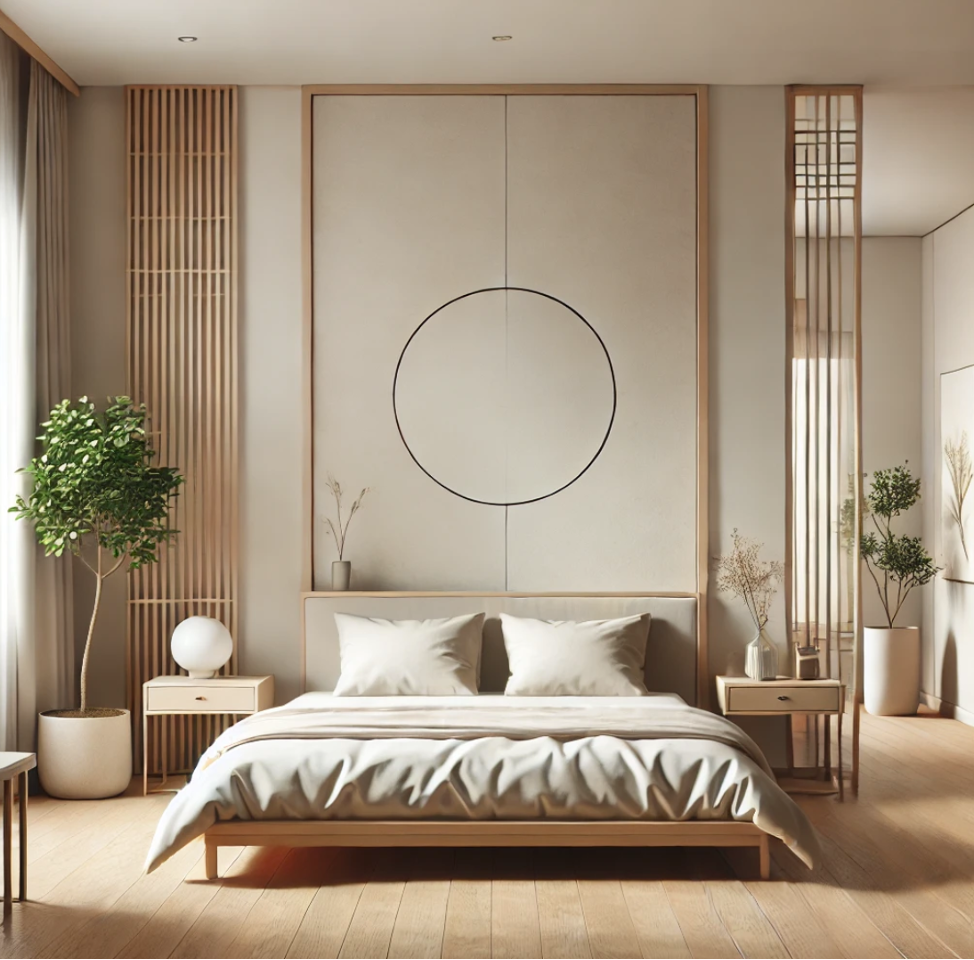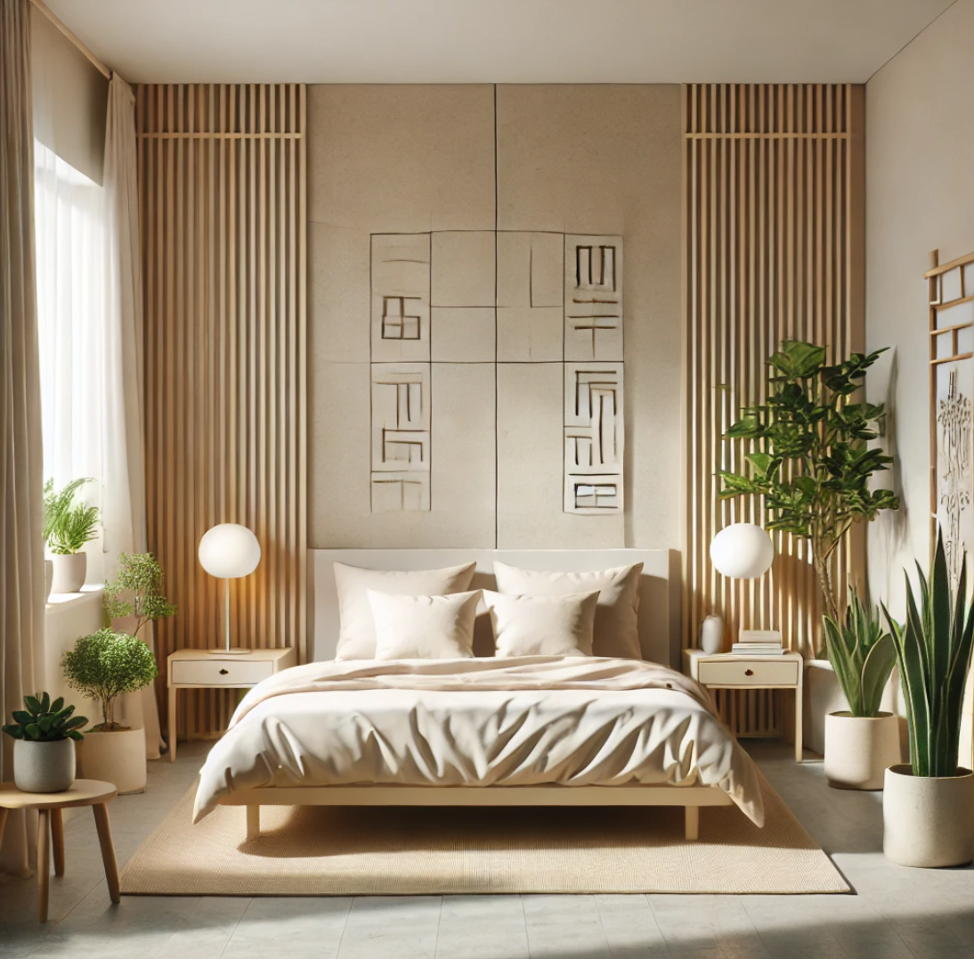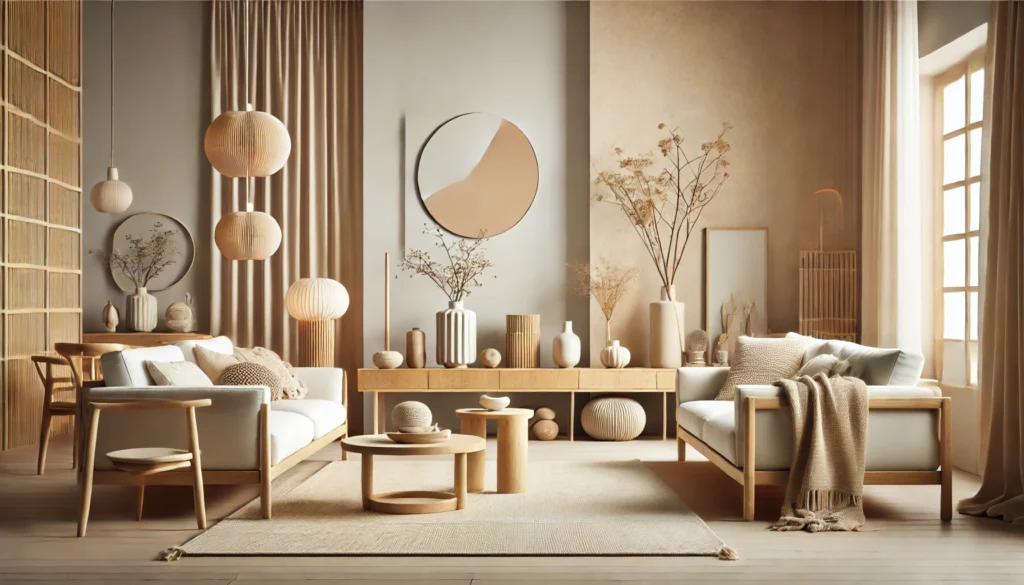Japandi is a fusion design style that combines the best of Japanese and Scandinavian aesthetics, offering a unique blend of minimalism, functionality, and natural beauty. This rising trend is perfect for those looking to create a serene, yet stylish home environment. Combining the clean lines and neutral colors of Scandinavian design with the rich textures and simplicity of Japanese interiors, Japandi is taking the world by storm, especially in the United States, where homeowners seek a peaceful and harmonious atmosphere.
What is Japandi?

Japandi merges two minimalist design philosophies from opposite ends of the globe. Both Japanese and Scandinavian styles emphasize simplicity, functionality, and the use of natural materials. However, they also bring unique elements that complement one another perfectly. Japanese design is rooted in the “wabi-sabi” philosophy, which celebrates the beauty of imperfection and the natural aging of materials. Scandinavian design, on the other hand, focuses on hygge — creating cozy, inviting spaces with practical, everyday use in mind.
The result is Japandi: an interior design style that is minimalist yet warm, functional yet beautiful, and clean yet inviting. In Japandi, every piece has a purpose, and every element in the space serves to create a balanced, soothing atmosphere.
Key Principles of Japandi

- Minimalism with Purpose
Japandi embraces minimalism, but it’s not just about having less; it’s about having purpose in every object. The idea is to avoid clutter and focus on items that are both functional and aesthetically pleasing. This style is ideal for creating a peaceful, organized space where nothing is excessive or unnecessary. - Natural Materials
One of the central components of Japandi design is the use of natural materials. Wood, stone, bamboo, and natural textiles like cotton and linen are key to achieving the desired look. While Scandinavian design often leans towards lighter woods, such as birch and pine, Japanese design incorporates richer, darker woods like walnut and cedar. The combination of these materials brings warmth and depth to the space. - Neutral Color Palette
Japandi’s color scheme is understated, featuring muted, earthy tones. Whites, beiges, soft grays, and warm browns dominate the palette, creating a calm and balanced environment. For contrast, darker shades like black or charcoal can be used sparingly to ground the space and add a sense of sophistication. - Simple, Thoughtful Décor
The Japandi aesthetic avoids excessive decoration. Décor is kept minimal, with carefully selected pieces that reflect both cultures’ love for simplicity and function. Clean lines, geometric shapes, and a few well-placed accessories, such as handcrafted pottery or woven baskets, keep the look grounded and authentic. - Bringing Nature Indoors
Natural light and greenery are essential components of Japandi. Large, open windows that allow sunlight to flood the room are ideal. Light curtains or shades can provide privacy without blocking natural light. In addition, plants are key to connecting the indoor space with nature. Bonsai trees, succulents, or even larger indoor plants like a fiddle-leaf fig or monstera can add life and energy to your home.
How to Achieve the Japandi Look in Your Home

Here are some actionable steps to bring the Japandi style into your living space:
- Choose Minimalist Furniture: Focus on clean lines and simple forms. Low-profile furniture such as floor-sitting sofas or sleek wooden tables will help maintain the minimalist, grounded look. In Japandi, function and form are equally important, so every piece should serve a practical purpose while contributing to the overall aesthetic.
- Opt for Natural Textures: Introduce natural textures through materials like wood, stone, or textiles. Wooden floors or furniture, stone countertops, and linen cushions can add texture without overpowering the space. Remember to balance light and dark tones—this could be through a combination of light wooden chairs with a darker wooden dining table, for example.
- Add Greenery: Plants are a simple way to bring life into a Japandi interior. Choose simple, elegant planters and incorporate greenery that complements the minimalist aesthetic. Japanese bonsai trees or Scandinavian-inspired potted plants like ferns or snake plants are great options.
- Embrace Imperfection: Following the Japanese wabi-sabi concept, embrace the imperfections in your décor. Handcrafted ceramics, weathered wood, or uneven textures can add character and warmth to your home. These elements should feel intentional, celebrating the beauty found in the natural world.
- Create Open, Light Spaces: Natural light is a key feature in Japandi design. Opt for large windows and minimal window treatments. If you need curtains or blinds, choose light and airy fabrics that let in plenty of natural light. The goal is to create a bright, open atmosphere that feels connected to the outdoors.
Why Japandi Works for Modern Homes

Japandi has gained popularity in the U.S. because it meets the needs of modern living while offering a sanctuary-like atmosphere. In a world that often feels chaotic, Japandi provides calm through its focus on simplicity and nature. It’s a perfect solution for people looking to declutter their homes and create a serene, minimalist environment without sacrificing comfort or warmth.
For those who work from home, Japandi offers a functional yet peaceful space, perfect for productivity and relaxation. The clean lines and lack of clutter promote focus, while the natural elements create a sense of calm and well-being.

Conclusion
Japandi is more than just a design trend—it’s a philosophy that brings balance, beauty, and function into your living space. By merging Japanese elegance with Scandinavian simplicity, this style creates a harmonious environment that feels both minimalist and inviting. Whether you’re renovating your entire home or just looking to update a room, Japandi offers a timeless, adaptable aesthetic that works well in any space.

